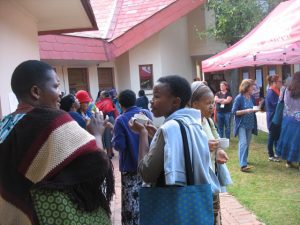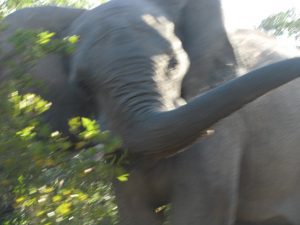Pan African Conference Johannesburg 2017
I was invited to attend the Pan African conference in Johannesburg in April (2017) and was happy to renew my acquaintance with friends and colleagues I had got to know during my last visit – Mandy and Tony who kindly hosted me again and William, Louisa and other colleagues. There were over 300 teachers at the conference and the keynote speakers were Florian Osswald (co-leader of the Pedagogical Section in Dornach) , Bernd Ruf who has built up the Emergency Pedagogy Organization at the Friends of Waldorf Education, Clara Aerts, who is a member of the international early years group and the European Council and myself. Additionally to my lecture I had two workshops on developing curriculum, one for early years and primary and one for Waldorf secondary education. Both groups were very interesting in terms of the questions the participants had.
Stories and their specific moods
We had really interesting conversations about what constitutes universal and local aspects of the curriculum, particularly in terms of story material. In the course of the conversations, the idea emerged that it is no good looking for equivalents of Middle European story material in local cultures but rather we should create a frame for the kind of consciousness we think the children should have in the various grades and then choose stories that live – or can be told – in that mood. I say ‘mood’ because it’s not just the content and events and characters in the stories, it’s the thinking and feeling that such stories generate in us. This can be magical, mystical, factual, historical, humorous and the narrative structure of the stories can be cyclical or lead to transformation.
Taking a multicultural perspective
We also agreed that it was probably necessary to take a multi-cultural perspective relating to the actual cultural influences in a particular place. Taking South Africa for example, the original peoples of that land were the Bushman or Khoisan. These people still live, marginalized in Southern Africa and their stories have been collected. The Bantu Peoples such as the Xhosa and Zulu and the Sotho-Tswana peoples migrated from central and western Africa into Southern Africa. Later the Boers – originally mainly Calvinist Dutch and German settlers came to the Cape and later migrated north. Both Bantu peoples and the Afrikaner have rich traditions of stories, as do the Indian and English people who settled in Southern Africa. Thus today the famous ’rainbow’ nation exists in a globalized world with many cultural influences and we should take account of all these in our teaching.
Language issues
I had long conversations with several teachers from Namibia where the Waldorf school has a language ‘issue’. The school was started by German speaking people in a former German colony. 80% of the children do not speak German or English as their mother tongue – they speak Herero and other local languages but the parents want them to learn German and or English because they see this as a passport to economic improvement. It is apparently almost impossible to find teachers who speak the local languages. As far as I can see, the teachers teach a basically German curriculum – initially to children who don’t speak German. So they are having main lesson in a foreign language. This raises for me all kinds of questions about how teaching needs to be the first couple of classes – let alone what the content of the curriculum should be.
General thoughts on curriculum development
I used to be much more insistent that Middle European material had no or little place in a South African (or any other country outside of German speaking Middle Europe) but I have modified my position. I see the matter somewhat differently. Let me try to tease out my thoughts on this. Here are few tentative basics:
• The college of teachers should decide what the language of instruction is and what other languages will be taught.
• The choice of language determines the primary source for stories.
• The secondary source for stories should be the country or region the school is located in and the tertiary source should be world tales- that is good stories from anywhere, chosen to approximate the age and interests of the children.
• Start from where you are geographically and ensure that the children are familiar with the locality (go for walks if this is safe, use local materials wherever possible, grow local plants around the school, grow and eat what grows locally in terms of edible plants).
• The history of your country should be the starting place for understanding historical processes rather than the exclusive focus. Children and young people in a country like Australia needs to understand all the cultures that shaped their country, indigenous, Aborigine, European and other origins of immigrants.
• Celebrate the festivals that are meaningful to the school community and reflect the dominant local cultures. People who have migrated have always taken their festivals with them but they have often adopted local practices as well. The important thing is to make choices consciously and reflect these regularly.
• Since many schools are located in cultures that have no clear traditions or these have been lost and forgotten through colonization, urbanization, globalization, Waldorf schools can create their own ‘hybrid’ cultures – again as long as these form a coherent whole and have an underlying understanding of human relationships to other people, the natural world and the spiritual experiences of those involved. This will be challenging if we are to avoid the kind of pick-and-mix cultural eclecticism that superficially adopts ‘traditions’ like Christmas trees and Santa Claus, or Halloween, which have invariably been introduced by commercial interests seeking new fashions to market (anyone who doubts this should look up how the original departments stores like Marché in Paris, Macy in New York or Harrods in London developed. Christmas presents in wrapping paper, Christmas trees for the living room with lights and baubles and Halloween pumpkins were all marketing ploys and inventions of traditions (like most things related to the House of Windsor, the Hanoverian Monarchs of Britain).
South African Safari
After the conference I was invited to go on a safari with three nights in lodges. I could only take in the first two nights because of my flight to Vietnam. We first went to a game farm, which breeds animals for hunting. The location was stunningly beautiful and the lodge very scenic. The first evening we went on a foot safari with a well-armed guide. The only animal we saw was a young bull elephant who got very angry when we came near. In fright I accidentally took an out of focus but dramatic photograph. After that we watched a beautiful sunset and the arrival of magnificent clouds. These turned into a dramatic storm with lightning striking the ground and the heaviest rain I have ever experienced. No rain protection was any use and we got back utterly wet and cold to find that the electricity was off and there was no hot water. They lit an open fire in the lodge and we tried to dry our shoes. They served us grilled wildebeest steaks and mounts of food and drink. The lodge I was sleeping in was not watertight and more of my clothes good wet. The following morning our game run turned out the same- torrential rain and no animals. We drove to the next lodge wearing our wet stuff. The next lodge was not a hunting lodge and the animals were undisturbed by the safari jeeps we drove around in and the first evening we saw many animals close up. Unfortunately, I caught a pretty nasty dose of bronchitis. I was taken to the airport with my suitcase of wet clothes, pretty muddy and feeling awful. In Dubai airport I managed to get some tablets against flu and managed to put the worst of it off!
Greetings from Martyn





